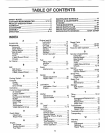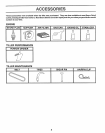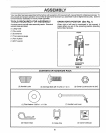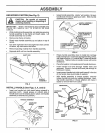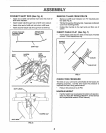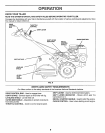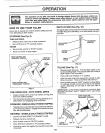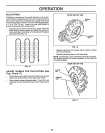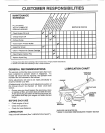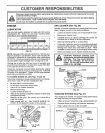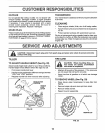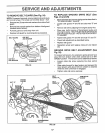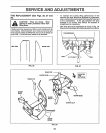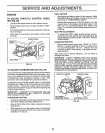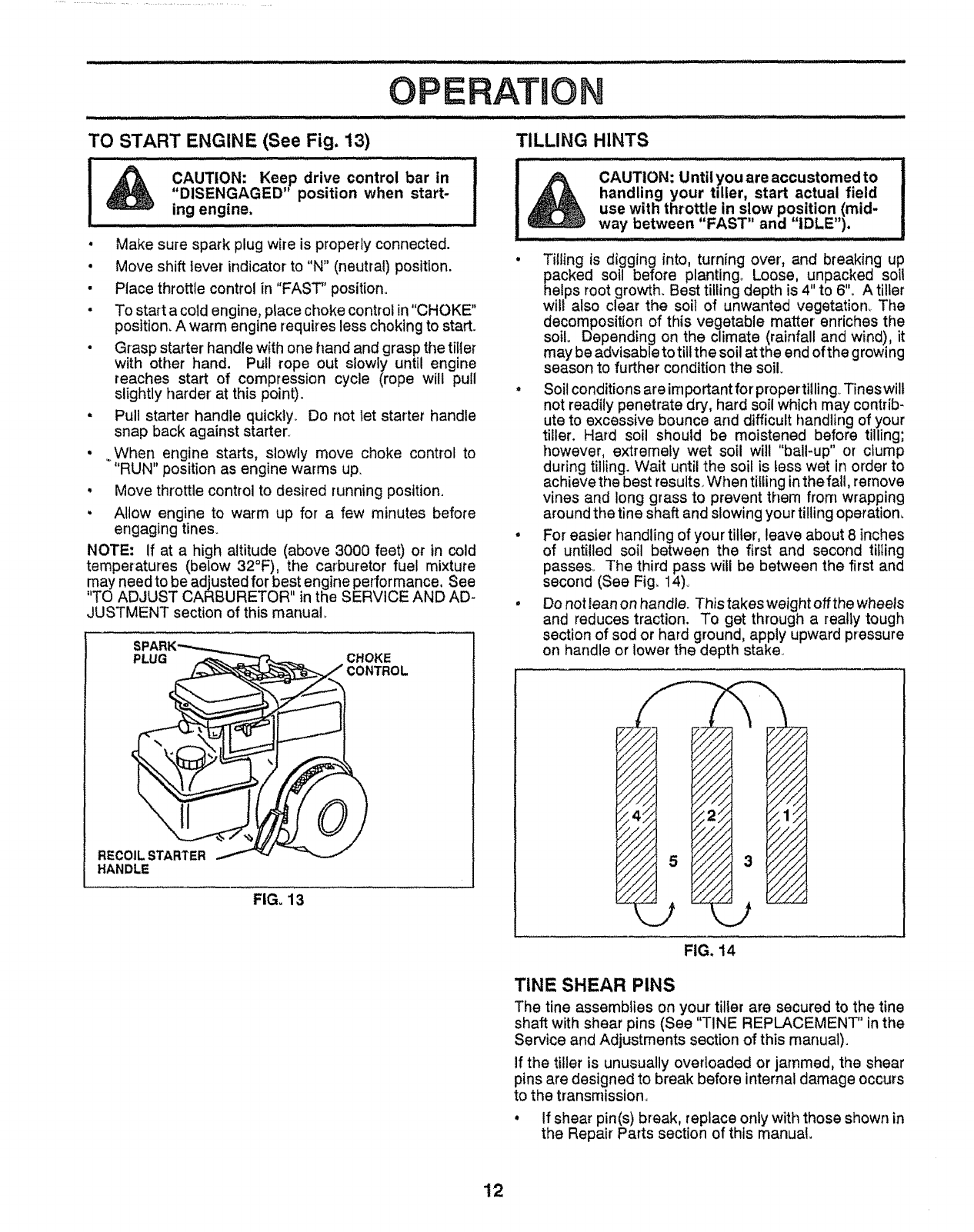
OPERATION
TO START ENGINE (See Fig. 13)
i ii illl,J IH ul,i lllll ii Hll,
_ CAUTION: Keep drive control bar in
. DISENGAGED position when start-
mg engine,
,Jlll,ll,ll,,,,,IHI, .....
• Make sure spark plug wire is properly connected.
• Move shift lever indicator to "N" (neutral) position.
• Place throttle control in "FAST" position°
• To start a cold engine, place choke control in"CHOKE"
position, A warm engine requires less chokingto start.
• Grasp starter handle with one hand and grasp the tiller
with other hand. Pull rope out slowly until engine
reaches start of compression cycle (rope will pull
slightly harder at this point)°
• Pull starter handle quickly, Do not let starter handle
snap back against starter.
• .When engine starts, slowly move choke control to
"RUN" position as engine warms up.
• Move throttle control to desired running position.
• Allow engine to warm up for a few minutes before
engaging tines.
NOTE: If at a high altitude (above 3000 feet) or in cold
temperatures (below 32°F), the carburetor fuel mixture
may need to be adjusted for best engine performance. See
"TO ADJUST CARBURETOR" in the SERVICE AND AD-
JUSTMENT section of this manual_
CHOKE
CONTROL
RECOILSTARTER
HANDLE
FIG. 13
TILLING HINTS
................... i i¸ ii L,J : .....
J
CAUTION: Until you are accustomed to
handling your tiller, start actual field
use with throttle in slow position (mid-
way between "FAST" and "iDLE"),
• Tilling is digging into, turning over, and breaking up
acked soil before planting_ Loose, unpacked soil
elps root growth_ Best tilling depth is 4 to 6 '. A tiller
will also clear the soil of unwanted vegetation, The
decomposition of this vegetable matter enriches the
soil. Depending on the climate (rainfall and wind), it
may be advisable to till the soil atthe end of the growing
season to further condition the soil_
• Soil conditions are importantfor' propertilling_ Tines wilt
not readily penetrate dry, hard soil which may contrib-
ute to excessive bounce and difficult handling of your
tiller. Hard soil should be moistened before tilling;
however, extremely wet soil wil! "ball-up" or clump
during tilling. Wait until the soil is less wet in order to
achieve the best results_ When titling in the fall, remove
vines and long grass to prevent them from wrapping
around the tine shaft and slowing your tilling operation,
. For easier handling of you r tiller, leave about 8 inches
of untilled soil between the first and second titiing
passes.. The third pass will be between the first and
second (See Fig, 14)o
- Do not lean on handle. This takes weight off the wheels
and reduces traction. To get through a realty tough
section of sod or hard ground, apply upward pressure
on handle or lower the depth stake_
ly.
FIG, t4
TINE SHEAR PINS
The tine assemblies on your tiller are secured to the tine
shaft with shear pins (See "TINE REPLACEMENT" in the
Service and Adjustments section ofthis manual),
if the tiller is unusually overloaded or jammed, the shear
pins are designed to break before internal damage occurs
to the transmission°
• If shear pin(s) break, replace only with those shown in
the Repair Parts section of this manual.
12



